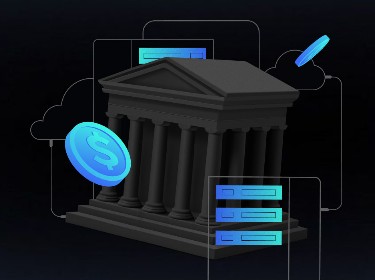The success of data analysis depends on selecting the appropriate technique. However, given the multitude of data analysis methods available, determining which one is best suited for your business can be challenging.
Knowing how to use, analyze, and make the most of your data can significantly boost your business’ growth. But the real magic happens when you apply the right data analysis methods and techniques.
In this article, we will delve into the most popular and efficient data analysis techniques and provide detailed insights on how to select the method that best aligns with your business needs and goals.
What is data analysis and why is it important?
Data analysis entails the systematic examination, cleaning, transformation, and modeling of data to extract valuable information, support conclusions, and facilitate decision-making.
The process proves important in interpreting huge data volumes, thus enabling organizations to base their decisions on statistical evidence and factual data.
What are the 5 main benefits of data analysis?
![]()
The benefits of data analysis are manifold, including — but not limited to — strategic decision-making enhancement, operational efficiency improvement, customer satisfaction boost, risk management strengthening, and innovation promotion.
Let’s take a closer look at each of these advantages.
Strategic decision-making enhancement
Data analysis equips organizations with the necessary tools to base strategic decisions on concrete insights drawn from their own data
With the aid of data analysis, companies can uncover patterns, trends, and correlations within these datasets and forecast future market movements with a degree of precision.
Thanks to this, businesses can transform strategic planning from guesswork into a process informed by data-driven predictions, thus significantly boosting the likelihood of achieving desired professional outcomes.
Operational efficiency improvement
The timely identification of bottlenecks, pitfalls, and potential improvements in operational processes is a direct outcome of meticulous data analysis.
A detailed examination of operational data can reveal hidden inefficiencies that, once addressed, can translate into significant time and cost savings.
This leads to leaner and more robust operations that are poised to enhance profitability and improve overall operational efficiency.
Customer satisfaction boost
Understanding customer sentiments, preferences, and behaviors enables businesses to customize their products and services with a high degree of precision. Tailoring offerings in this way ensures a closer match to customer expectations, which naturally leads to higher satisfaction levels.
As a result, satisfied customers are more likely to remain loyal, engage in repeat business, and advocate for the brand, thus reinforcing the business’s market position.
Explore the advantages of customer churn prediction software and learn how to develop one for your business
Risk management strengthening
Through careful analysis of data, businesses have the capability to anticipate potential risks and vulnerabilities, which allows them to strategize effectively to mitigate these risks in advance.
Thus, a proactive stance on risk management safeguards the financial well-being of the organization and upholds its reputation among stakeholders.
Innovation promotion
The process of analyzing data can uncover opportunities for new product development, improvements in services, or the creation of entirely new business models.
Therefore, companies that utilize these data-driven insights can establish themselves as pioneers in innovation, secure early entry into new markets, and maintain a lead over competitive trends.
Top 11 data analysis methods and techniques
![]()
Data analysis provides companies with diverse methods and techniques to reveal particular insights from their data.
Below, we present the top 11 data analysis methods and techniques, with details provided to showcase their unique applications and benefits.
1. Descriptive analysis
Descriptive analysis focuses on summarizing and understanding the characteristics of a dataset.
Analysts use this data analysis method to transform raw data into a form that is understandable and interpretable, thus providing a clear picture of what has happened within the dataset.
Descriptive analysis involves the calculation of various statistical measures, such as mean, median, mode, and standard deviation, offering a snapshot of the data’s central tendencies and variability.
The technique proves invaluable for businesses seeking to gain an initial overview of their data and sets the stage for more complex analyses.
2. Diagnostic analysis
The quest to understand the ‘why’ behind certain trends or anomalies leads experts to diagnostic data analysis methods. It serves as a bridge, moving from simple observation to uncovering the underlying factors contributing to data trends.
The method involves digging deeper into the data, beyond the surface-level insights provided by descriptive analysis. Techniques such as data mining, drill-down, and correlation analysis are vital here as they allow analysts to identify relationships and causations.
3. Predictive analysis
Predictive analysis makes use of historical data to make predictions about future events. It employs statistical models and machine learning algorithms to identify patterns and trends that may indicate future outcomes.
This data analysis technique is suitable for businesses that aim to anticipate market trends, customer behaviors, or potential risks.
The accuracy of predictions here depends significantly on the quality and volume of the data analyzed as well as the sophistication of the modeling techniques used.
See how our professional predictive analytics services, which cover software development, integration, modernization, and maintenance, can propel your business forward
4. Prescriptive analysis
The prescriptive data analysis method goes a step beyond predictive analysis by not only forecasting future trends but also suggesting actions to benefit from predictions.
The process integrates advanced analytics and business rules and provides recommendations for decision-making. It also evaluates possible outcomes and scenarios to advise on the best course of action.
Organizations generally opt for prescriptive analysis to optimize operations, improve customer engagement, and enhance decision-making processes.
5. Quantitative analysis
Quantitative analysis uses numerical data to measure and understand behaviors, outcomes, and patterns. It generally forms the backbone of many scientific and financial analyses and provides a rigorous framework for testing hypotheses and making predictions.
This data analysis technique relies heavily on the use of statistical, mathematical, or computational techniques. It is particularly effective in scenarios where the precision of measurements and statistical reliability are paramount.
6. Qualitative analysis
In contrast to quantitative analysis, qualitative analysis focuses on understanding the quality, nature, and meanings of data elements. It examines non-numerical data and derives insights through observation, interviews, and content analysis.
The data analysis method is invaluable for exploring complex questions where human experiences, motivations, and emotions play a vital role. It provides depth and context to the data and offers insights that numbers alone cannot convey.
7. Time series analysis
Time series analysis deals with data points collected or recorded at specific time intervals. This data analysis technique is paramount for identifying trends, cyclical patterns, and seasonal variations over time.
Analysts use time series analysis in various domains, such as finance, economics, and meteorology to forecast future events based on past trends. It requires careful consideration of the data’s temporal structure, which makes it both a unique challenge and a powerful tool for predictive modeling.
From BI consulting to the development of custom solutions — delve into our expert business intelligence services and connect with us today
8. Regression analysis
The regression data analysis method examines the relationship between a dependent variable and one or more independent variables. Its core goal is to understand how the typical value of the dependent variable changes when any one of the independent variables is varied.
The technique is widely used for forecasting and predicting outcomes as well as estimating the strength of the relationship between variables. It proves essential in fields ranging from economics to social sciences where understanding the dynamics between variables is paramount.
9. Cluster analysis
Cluster analysis, another data analysis technique, organizes objects into groups where those within the same group, or cluster, exhibit more similarity to each other than to objects in different groups.
This data analysis method comes in handy in market segmentation as it helps discover natural groupings within data and uncover patterns that might not be immediately apparent.
10. Sentiment analysis
Sentiment analysis is a data analysis method that is frequently used to interpret and categorize opinions found in textual content. It normally employs natural language processing and machine learning techniques to determine the sentiment conveyed through words, identifying if it is positive, negative, or neutral.
Companies use sentiment analysis to track brand perception, comprehend customer feedback, and assess public opinion across social media platforms. It also allows businesses to proactively address customer sentiments, thereby improving the customer experience and fostering brand loyalty.
Check out the key aspects of customer sentiment analysis and understand its importance for your business with our comprehensive blog guide
11. Factor analysis
Factor analysis seeks to uncover the underlying structure within a dataset by identifying a set of unobservable variables — or factors — that influence the patterns observed in the data.
This data analysis technique reduces data complexity by identifying a few influential factors from a larger set of observed variables.
Useful in psychology, social sciences, and market research, factor analysis helps in simplifying data, making it easier to interpret by eliminating redundancy and highlighting the most significant relationships.
How to choose the suitable data analysis technique for your specific use case?
![]()
Choosing the right data analysis technique — or a combination of techniques — for a specific use case or industry requires meticulous consideration of various factors as this choice greatly influences the insights obtained and the overall success of data-driven endeavors.
Here are 6 key tips for choosing the right data analysis methods.
1. Consider the nature of your data
First of all, you need to establish a good understanding of your data. This means considering not just the type (quantitative vs. qualitative) but also the structure, quality, and completeness of your dataset.
Some techniques are better suited for large, messy datasets, while others might excel with smaller, cleaner data. The right data analysis technique will respect the nature of your data and leverage its strengths while mitigating its weaknesses.
2. Map out industry constraints and opportunities
Each industry has unique requirements and standards that can dictate the choice of data analysis technique.
For example, the financial software development might prioritize techniques that focus on risk assessment and fraud detection, while marketing sectors may lean towards data analysis methods that excel in customer segmentation and sentiment analysis.
Familiarity with industry-specific needs and challenges ensures the selection of a data analysis technique that provides relevant and actionable insights.
3. Understand the complexity and scale of your data challenge
The size and complexity of your data set can greatly affect which techniques and technologies are viable.
Advanced machine learning services and solutions might be necessary for sifting through terabytes of data, while simpler statistical methods might suffice for smaller, well-defined datasets.
Assessing this aspect helps in choosing a data analysis technique that is neither overkill nor underpowered for your data challenge.
4. Match techniques with tools and talent
Your choice of technique must also consider the tools you have at your disposal and the skillset of your team.
There is little point in selecting a state-of-the-art data analysis method if you lack the software or the expertise to implement it effectively.
Therefore, opting for a method that aligns with your team’s skills and available technology facilitates a smoother data analysis process.
5. Look toward future needs
As organizations evolve, their data analysis needs may change and require different data analysis techniques to address new questions or handle larger datasets.
In this case, choosing adaptable and scalable methods ensures that the data analysis process remains efficient and relevant over time.
6. Leverage external expertise
When in doubt, seek external expertise.
Data analysis is a rapidly evolving field, and what was cutting-edge yesterday might be outdated today.
Thus, consulting with experts can provide fresh insights, help you navigate the vast landscape of data analysis techniques, and choose the most suitable method for your specific needs.
Having trouble effectively analyzing the strengths, weaknesses, and opportunities within your business realm? Contact our experienced IT consultants for tailored guidance
Current trends in data analysis to consider
The domain of data analysis is constantly evolving and adopting new technologies and methodologies that revolutionize the way businesses understand and utilize their data.
Here are the current trends that are shaping data analysis methods and techniques today.
1. Artificial intelligence and machine learning integration
Artificial intelligence and machine learning facilitate the analysis of vast datasets at unparalleled speeds and help uncover patterns and insights beyond the reach of conventional data analysis methods.
Owing to these technologies, businesses can now forecast market trends, customer behavior, and potential risks with improved accuracy and swiftness.
Importantly, the incorporation of AI/ML and computer vision development into data analysis democratizes the process, which makes advanced analytics available to a wider audience.
Discover how our artificial intelligence services, encompassing natural language processing, computer vision, deep learning, and machine learning, can enhance your bottom line
2. Real-time data processing and analytics
Real-time data visualization and analytics allow for the examination of data at the moment it is produced.
The capability enables organizations to respond immediately to fluctuations and anomalies and provides them with a competitive edge in swiftly changing markets. With the support of a data visualization consulting team, businesses can optimize their visualization strategies to better understand trends and make proactive decisions based on live data.
3. Data privacy and ethics
With data analysis becoming integral to business operations, the emphasis on data privacy and ethics has significantly increased.
Companies are now prioritizing ethical data practices to ensure they adhere to regulations such as GDPR and CCPA. These practices promote transparency in the collection and analysis of data and advocate for its responsible use, thus building trust between businesses and their customers.
4. Focus on data literacy
As data takes a central role in organizational decision-making, the need for data literacy across all levels becomes more evident.
Efforts and initiatives to enhance data literacy ensure that employees have the skills to interpret, manage, and make informed arguments with data more effectively.
5. Data as a service
Data as a service (DaaS) has surfaced as a model that delivers data-related services such as storage, processing, and analytics via cloud-based platforms. It grants companies access to high-quality, real-time data while eliminating the necessity for substantial infrastructure investments.
DaaS platforms are evolving to become more sophisticated and provide more advanced analytics features that allow businesses to derive insights without the burden of handling the complex underlying technology.
6. Natural language processing in data analytics
The incorporation of natural language processing techniques into data analysis is enhancing the accessibility of data insights.
NLP allows users to query data in natural language, which makes it much easier for non-technical users to interact with data analysis systems.
Thus, the trend is enhancing the usability of data analytics by allowing for more intuitive data exploration and broadening the range of insights users can derive from their data.
7. Usage of simulated data
With the increasing difficulty of accessing real-world data due to privacy issues and regulatory restrictions, the utilization of simulated data is gaining momentum.
Simulated or synthetic data is created to resemble real-world data and it enables analysts to perform experiments and model scenarios without risking sensitive information.
Closing thoughts
Choosing the right data analysis method is essential for unlocking the full potential of your data — and making the right choice can illuminate pathways to innovation, efficiency, and more informed decision-making.
For businesses looking to maximize their data’s value with professional guidance, PixelPlex stands ready to help.
Our comprehensive data analytics services, which include implementation, visualization, integration, augmentation as well as extensive big data consulting and data science services are designed to ensure the success of your data analysis initiatives.
Engage with our PixelPlex team and let us assist you in leveraging your data more effectively and turning insights into strategic advantages for your business.




